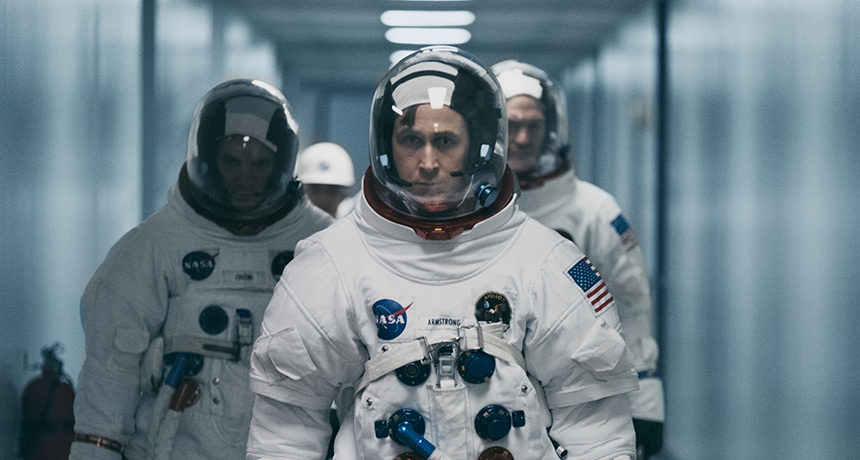
BOLDLY GOING Ryan Gosling as Neil Armstrong walks to the Apollo 11 spacecraft before his historic moon landing in First Man.
Universal Pictures
First Man is not a movie about the moon landing.

BOLDLY GOING Ryan Gosling as Neil Armstrong walks to the Apollo 11 spacecraft before his historic moon landing in First Man.
Universal Pictures
First Man is not a movie about the moon landing.